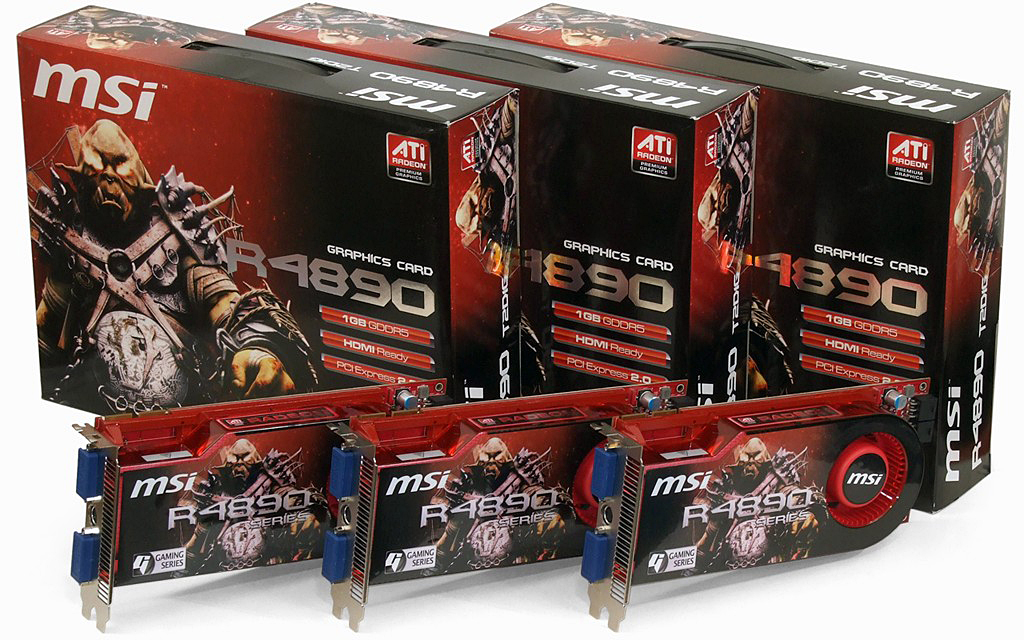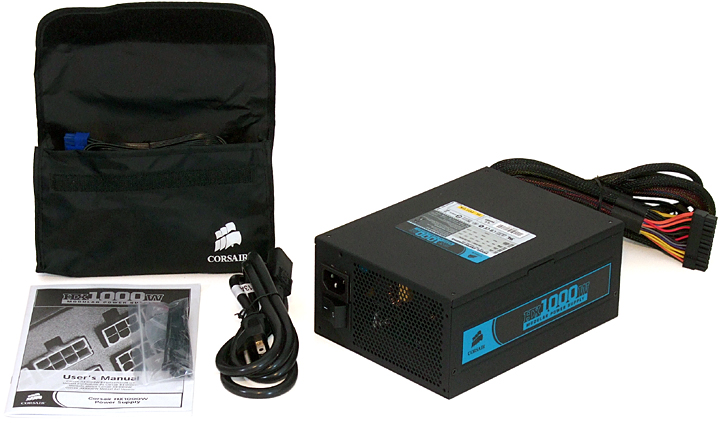System Builder Marathon, Sept. '09: $2,500 Performance PC
Graphics And Power
Graphics: MSI R4890-T2D1G OC (CrossFireX)
The biggest question in CrossFireX graphics is whether to use four graphics processors or three. While AMD's Radeon HD 4870 X2 offers two graphics processors on a single double-slot card, the Radeon HD 4870 graphics processor is not AMD's fastest part. For that, we look to the Radeon HD 4890, which takes us back to the question of whether to use four cards or three, since our motherboard does support four.
Yet, so many readers have requested that our highest-priced system have SSD drives that we spent the money required for a fourth Radeon HD 4890 on storage instead. That single budgetary restriction allowed us to put aside any questions about three- to four-GPU CrossFire scaling.
Read Customer Reviews of MSI's R4890-T2D1G OC
A great number of Radeon HD 4890 solutions were available, but MSI’s overclocked R4890-T2D1G OC was the best-value part with which to use AMD’s standard cooling solution. We insisted on the standard cooler because it vents heated air out the rear panel, rather than into the case where it would affect CPU cooling.
Power: Corsair CMPSU-1000HX (1,000W Modular)
Nobody likes cable clutter and Corsair has delivered the two best modular units this lab has ever seen: the CMPSU-1000HX (1,000 W) and CMPSU-850HX (850 W). Both feature an 80 PLUS efficiency rating and provide the six PCIe power connections our triple-4890 graphics cards require. The 850W model has the advantage of even better efficiency, while the 1,000W part has more capacity and the question of which we should choose lingered for days. Eventually the “safe option” to go big prevailed.
Get Tom's Hardware's best news and in-depth reviews, straight to your inbox.
Read Customer Reviews of Corsair's CMPSU-1000HX
The $40 price difference between the 1,000W and 850W versions carried little weight, but our later testing proved that the 850W unit would have been more than adequate, since the AMD processor we overclocked consumes far less power than the overclocked Core i7s to which we’d become accustomed. There’s even enough power left in the 1000HX to expand to four graphics cards, but such configurations would require two four-pin to PCIe adapters to be spread across two cards so that all four cards got at least one native PCIe cable.
-
The Quality of video on ATI streem is shit on sticks and doesn't even support high profile.Reply
The last build was a bit too odd for me but this one seems like a very nice chose of parts and on a larger screen set up makes a lot of sense the loss of i7 for AMD only build was a bit sad but the addition of those great SSD kind of makes up for me along with the nice chose of case and cooling. That case looks like it is very nice to work on. -
dirtmountain The Corsair CMPSU-850HX is rated Silver, not Gold. Nice build, good results, great work.Reply -
@DirtmanReply
http://www.80plus.org/manu/psu/psu_detail.aspx?id=25&type=2
Check your sources because you have it wrong
CMPSU-850HX ATX12V 850 90.38% Gold -
dirtmountain http://www.newegg.com/Product/Product.aspx?Item=N82E16817139011Reply
Newegg says differently. I did check sources. -
dirtmountain So does JonnyguruReply
http://www.jonnyguru.com/modules.php?name=NDReviews&op=Story2&reid=153
I guess you just can't believe everything you find on a brands site. -
WINTERLORD now that is one slick gaming machine! could'nt imagine them frames rates on a big monitor. love the insides water cooling 3 radeon 4890's with room for a 4th. great pictures by the way lots of eye candy. you can tell alot of work went into tis kmonster. great article.Reply





